 |
 |
 |
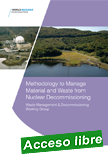 |
Methodology to Manage Material and Waste from Nuclear Decommissioning
WNA -published: fev/2019
The nuclear industry has acquired considerable experience, as well as developed good practices, in the decommissioning of nuclear facilities. In 2015, the Waste Management & Decommissioning Working Group of World Nuclear Association decided to produce a report that would bring together this knowledge and expertise, to provide guidance to those facing new decommissioning challenges.
|
During the plenary sessions of the Waste Management & Decommissioning Working Group and the Annual Symposium of World Nuclear Association, the status of the report was regularly presented to the nuclear community. This allowed the authors to continuously develop and update the report by taking into account new processes, improvements and events. In addition, the authors cooperated with other international organisations (such as the International Atomic Energy Agency, OECD Nuclear Energy Agency and the European Commission) to ensure that the report would complement the findings and objectives of these organisations.
It is intended that Methodology to Manage Material and Waste from Nuclear Decommissioning will serve as a practical guide to decommissioning nuclear plants, allowing both established nuclear stakeholders and those new to the industry to learn from past experience. It outlines international good practice and gives details on potential methodologies for decommissioning and dismantling waste management programmes. Where appropriate, the report attempts to summarise the wealth of decommissioning experience and include guidance on the deployment of proven tools, techniques and processes. The report is intended for policy makers, utilities, regulators and other relevant industry participants, especially where there is little developed capability, long-term track record or experience.
|
 |
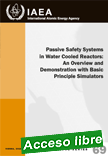 |
Passive Safety Systems in Water Cooled Reactors: An Overview and Demonstration with Basic Principle Simulator
Training Course Series No. 69 published: 2019
This publication is largely adapted from the lectures and course material presented at the National Training Course on Advanced Water Cooled Reactors (WCRs): Physics, Technology, Passive Safety and Basic Principle Simulators held by the IAEA and the Pakistan Institute of Engineering and Applied Sciences (PIEAS) in Islamabad 22–26 January 2018. The course covered the basics of reactor operation, natural circulation phenomena and modelling, and passive safety systems.
|
The concepts taught in course lectures were reinforced with practical training exercises and demonstrations using the IAEA basic principle simulators. The training materials from the course were compiled, edited and supplemented to create this publication as a resource for conducting similar training courses, as a reference for education and training programmes, and for direct use by trainees.
|
 |
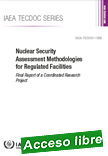 |
Nuclear Security Assessment Methodologies for Regulated Facilities
IAEA TECDOC No. 1868
This publication presents the results of an IAEA coordinated research project entitled Development of Nuclear Security Assessment Methodologies (NUSAM) for Regulated Facilities. It includes a description of the completed NUSAM methodology as well as the results of applying that methodology to three case studies covering the following facilities/activities: a nuclear power plant, an irradiator facility and a radioactive material transport.
|
|
 |
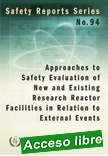 |
Approaches to Safety Evaluation of New and Existing Research Reactor Facilities in Relation to External Events
Safety Reports Series No. 94
published: 2019
This publication provides information and a framework for Member States to conduct realistic safety evaluation for research reactors in terms of external events. The publication provides information with examples on the use of a graded approach, based on the radiological hazard that a facility poses to the environment, public and workers, and takes into account the lessons from the Fukushima accident. |
This publication supports the development of site specific guidelines for the actual design and safety assessment, and should be used in conjunction with the relevant IAEA Safety Standards. It can also be used as training material for research reactor staff and for a self-assessment of the vulnerability of existing structures to external events.
|
 |
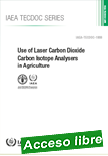 |
Use of Laser Carbon Dioxide Carbon Isotope Analysers in Agriculture
IAEA Services Series No. 38
published: 2019
This publication provides guidance for monitoring and tracking carbon dioxide in the atmosphere or emissions from soil and plant materials using a laser carbon dioxide carbon isotope analyser. Through illustrated step-by-step standard operating procedures this publication assists scientists, technicians and students in techniques ranging from initial calibration of the instrument to collecting measurements and analysing data. |
When accurately utilized, this instrumentation can ensure proper evaluation of agricultural management practices to reduce soil carbon dioxide emissions and promote climate-smart agriculture. The final chapter of this publication also presents a case study that demonstrates how this instrumentation can be used.
|
 |
 |
Advisory Mission on Regulatory Infrastructure for Radiation Safety Guidelines
IAEA-TECDOC-1866
published: 2019
The IAEA’s Division of Radiation, Transport & Waste Safety (NSRW) has established the Advisory Mission on Regulatory Infrastructure for Radiation Safety (AMRAS) Service to advise and where appropriate, provide support to States in their efforts to establish or improve national regulatory infrastructure for radiation safety. AMRAS are usually conducted in Member States where significant actions are necessary for the country’s regulatory infrastructure to meet the provisions of the IAEA Safety Standards, the Code of Conduct on the Safety and Security of Radioactive Sources, and associated guidance.
|
An AMRAS may be conducted in States with essentially no regulatory infrastructure for radiation safety. The scope of each advisory mission is adjusted according to the specific needs and interests of the requesting State and to support the establishment and improvement of its national regulatory infrastructure for radiation safety.
|
 |
 |
Management of Project Risks in Decommissioning
IAEA published: fev/2019
This safety report publication provides specific guidance on the management of project risks in decommissioning. The publication proposes a systematic and pro-active approach on how to identify, analyse, evaluate, and treat relevant project risks at strategic and operational levels, and provides examples of application of the proposed approach. |
|
 |
 |
Security during the Lifetime of a Nuclear Facility
IAEA published: fev/2019
This publication provides guidance to States, competent authorities and operators on appropriate nuclear security measures during each stage in the lifetime of a nuclear facility, from initial planning of the facility through to its final decommissioning. The publication addresses effective nuclear security in the transition between stages and applies to the nuclear security of nuclear material and nuclear facilities throughout the lifetime of all types of nuclear facilities.
|
Although focused on nuclear power, the guidance contained in this publication may be useful for States developing nuclear programmes with other types of facilities, including those for research and development.
|
 |
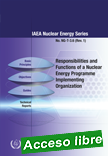 |
Responsibilities and Functions of a Nuclear Energy Programme Implementing Organization
IAEA published: fev/2019
An important element of the milestones approach to introducing nuclear power is a mechanism to coordinate efforts among the many organizations and individuals who have roles to play in the process. This mechanism is referred to as a nuclear energy programme implementing organization (NEPIO). This publication describes a set of responsibilities, functions and activities that States can use as guidance for establishing a NEPIO and ensuring its effectiveness.
|
This revision incorporates lessons learned from integrated nuclear infrastructure review missions and IAEA technical assistance activities. It attempts to clarify that there are many ways to structure a NEPIO and that each could result in the successful execution of all functions and activities. Several case studies are included. Consistent with the revision of IAEA Nuclear Energy Series No. NG-G-3.1 (Rev. 1) Milestones in the Development of a National Infrastructure for Nuclear Power published in 2015, this publication recognizes that the NEPIO plays an important and evolving role in each of the three phases of nuclear power infrastructure development.
|
 |
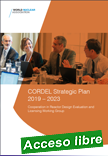 |
CORDEL Strategic Plan 2019
Published March 2019
This Strategic Plan outlines the scope of activity and direction of the Cooperation in Reactor Design Evaluation and Licensing (CORDEL) Working Group during the next five-year period. It includes information about CORDEL’s objectives, priorities and interactions with stakeholders.
|
|
 |
| |
|
|

|
|
|
| |
|
|
| |
| |
|
|
| |
| |
|
|
| |
| |
|
|
|
